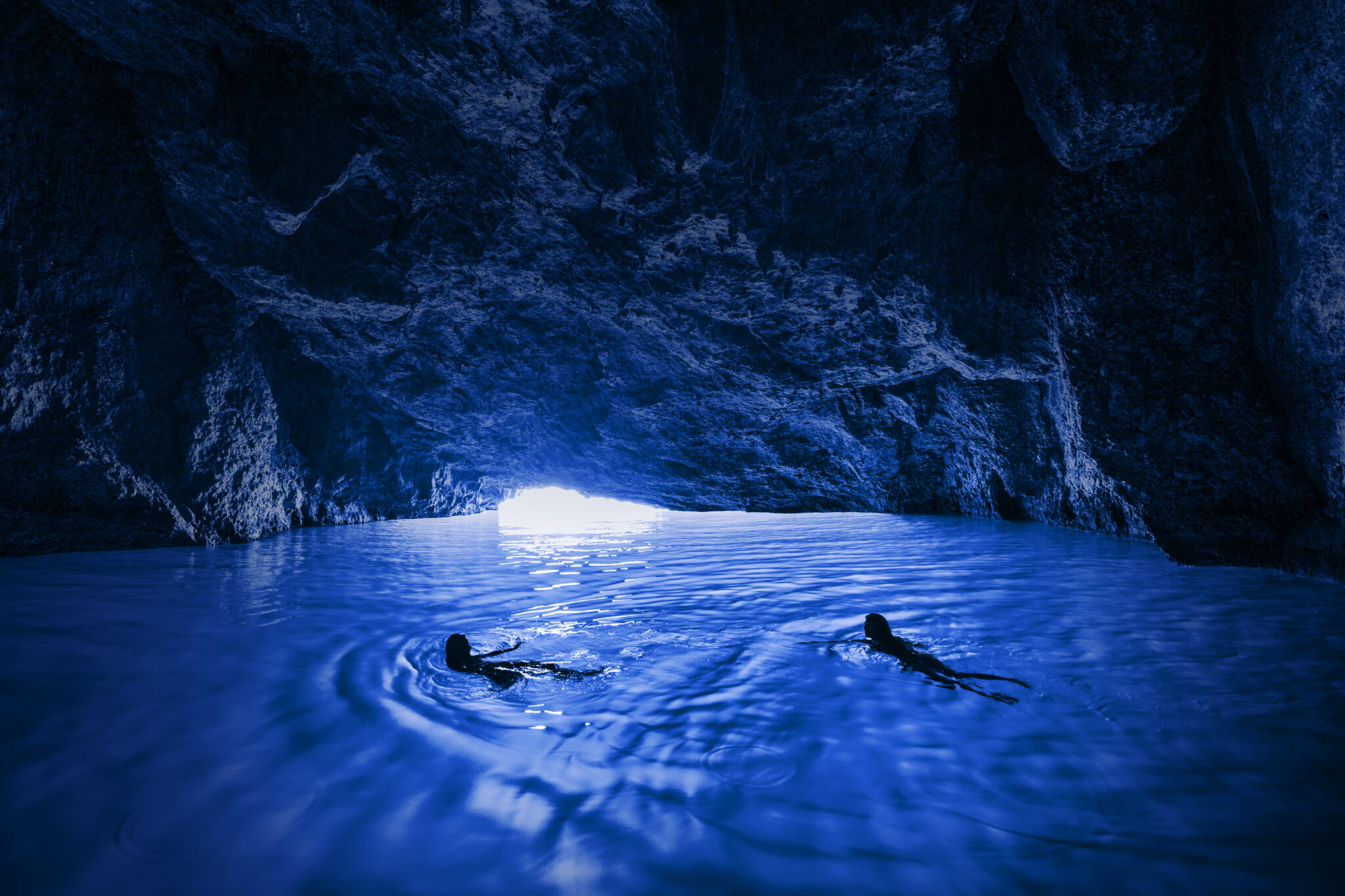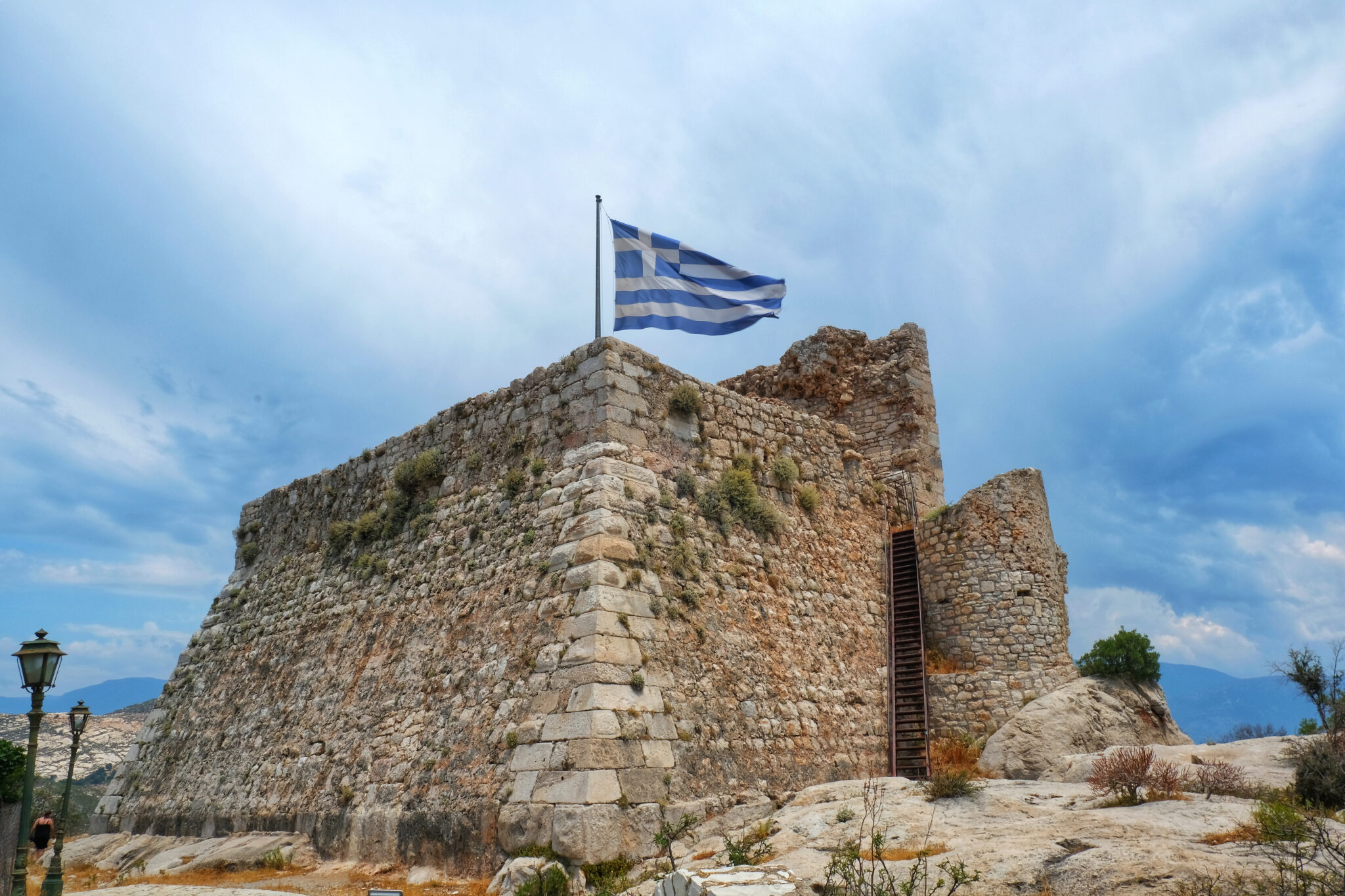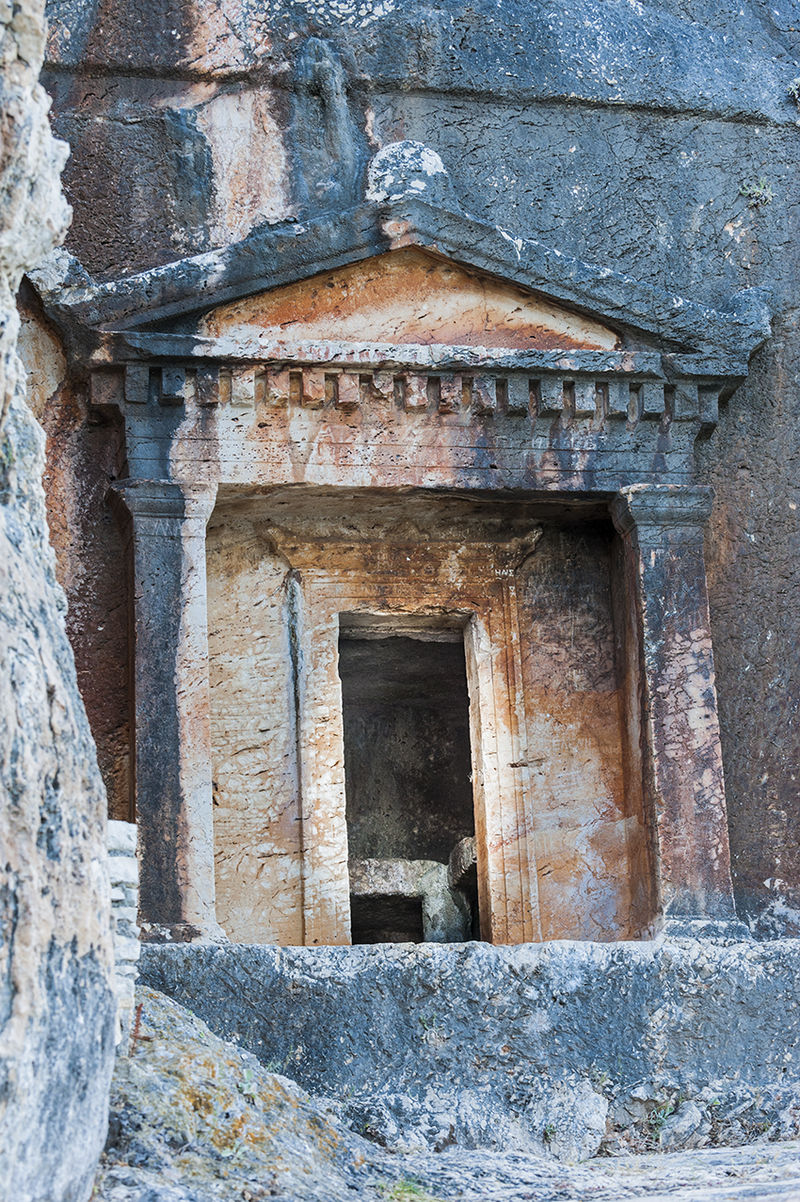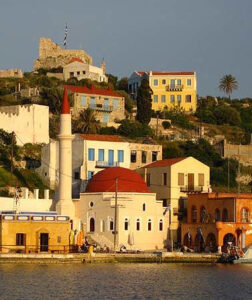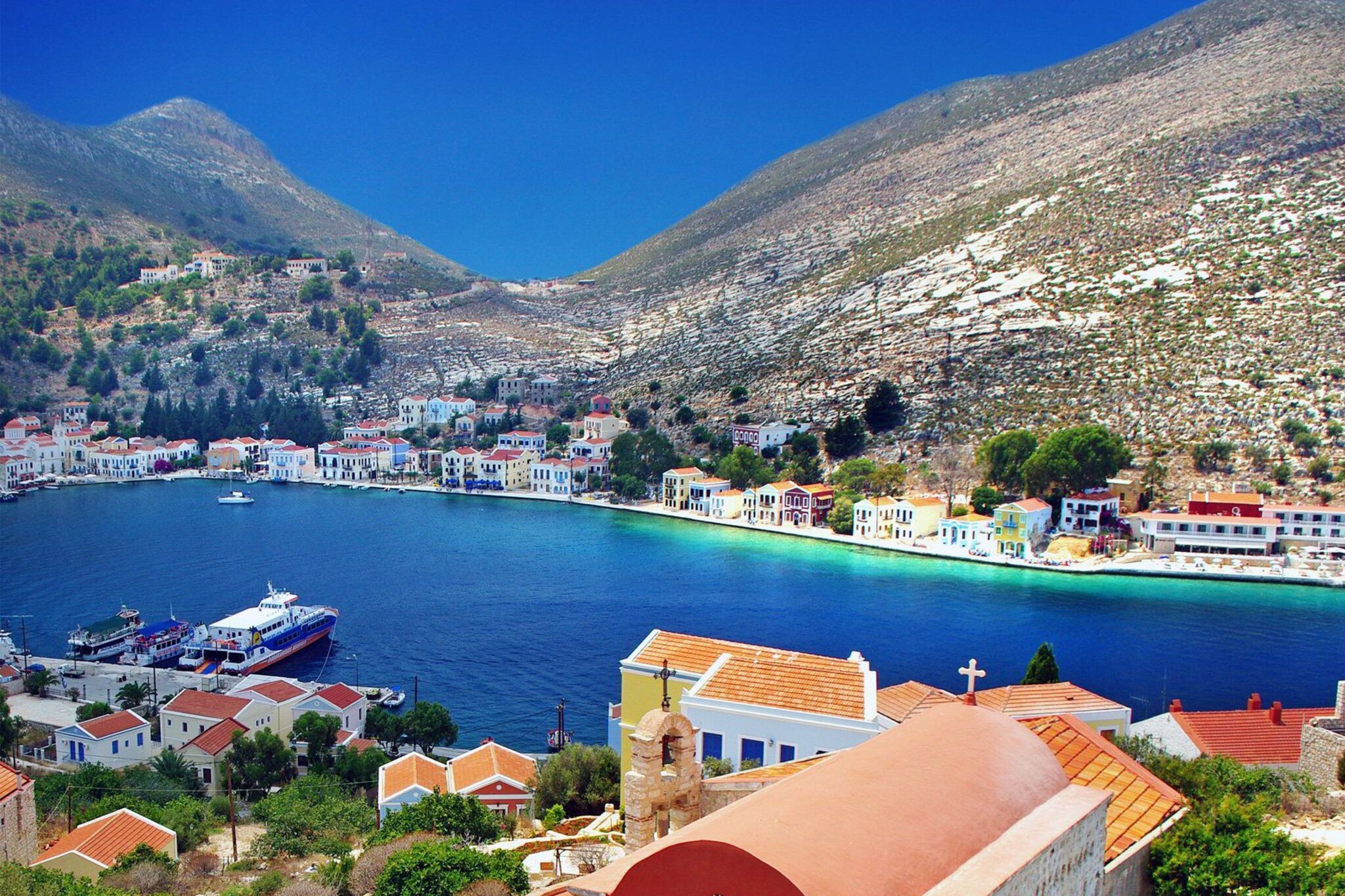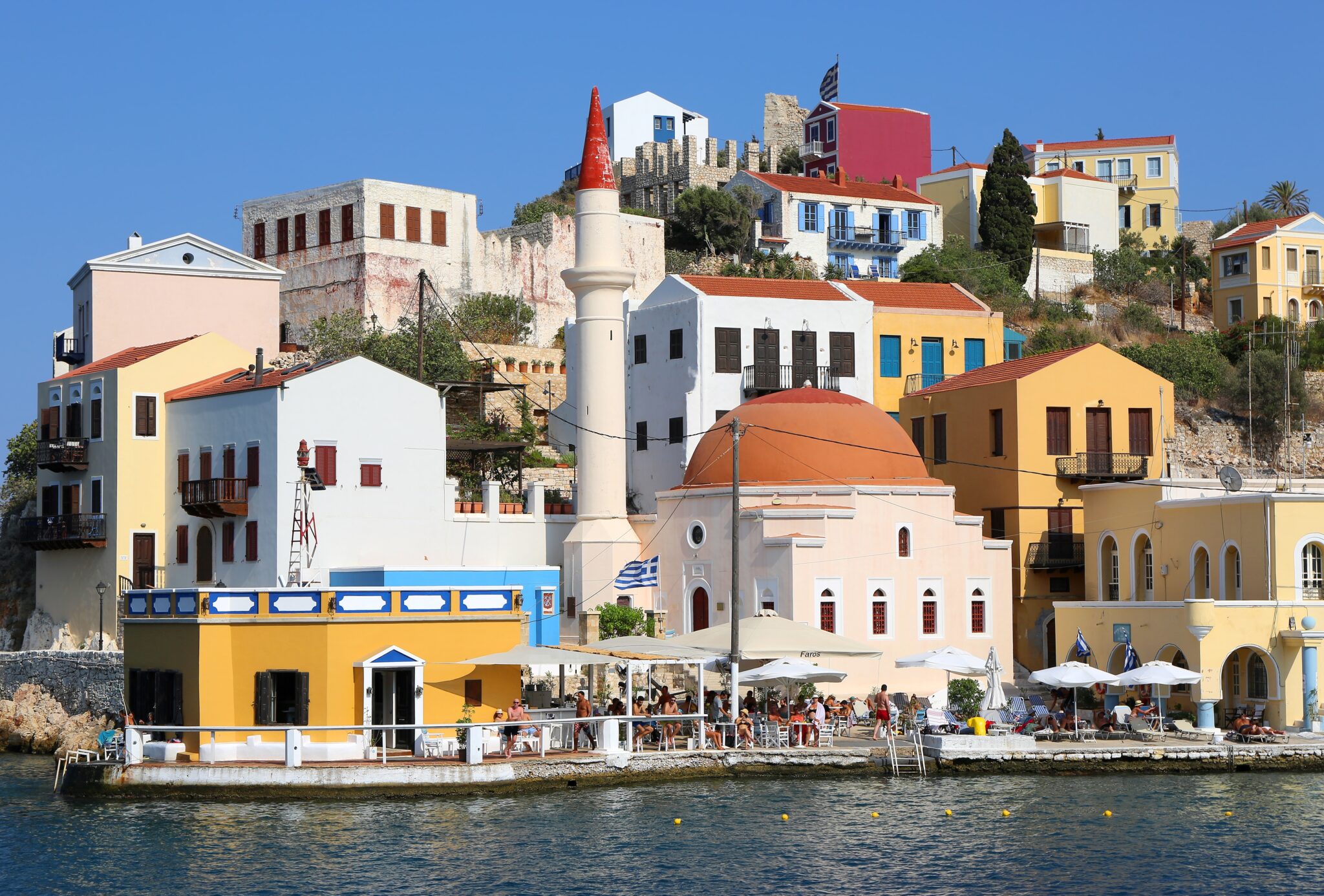Begin by visiting the enchanting Blue Cave, where the electric blue waters and white stalagmites create a magical atmosphere. For an even more stunning view, climb the 401 steps to the Monastery of Agios Georgos, where you’ll be rewarded with panoramic views of the island’s picturesque surroundings. The ancient citadel of Palaiokastro is a must-visit site and the oldest and most significant surviving monument on the island, while the Old Mosque and Folk Museum and Saint John’s Castle provide a glimpse into the island’s diverse and complex history. Don’t miss the chance to discover Kastellorizo, a Greek island like no other.
The Blue Cave
The enchanting Blue Cave of Kastelorizo, a geological wonder and the island’s most famous sight, offers a magical experience for visitors. Best visited early in the morning for an unforgettable swim, the cave is larger than Italy’s famed Grotta Azzurra. Accessible only by boat in good weather, the journey into the cave is a remarkable experience, with stunning electric blue waters and rare white stalagmites hanging from the ceiling. The cave is also a refuge for Mediterranean Monk seals and home to various wildlife, including wild pigeons and shoals of fish.
While some may say the Blue Cave is the main reason to visit Kastelorizo, you can also visit the island’s other caves, Fotsaliki, Kolones, Arnaoutis, and Katrantzia.
Saint John’s castle in Kastellorizo
The medieval castle of Kastellorizo dominates the port and is a must-see attraction on the easternmost point of Greece. The island is located 1.25 miles off the coast of Turkey, 72 miles east of Rhodes. The castle was built by the Knights of the Order of St. John Hospitaller of Jerusalem around 1380, on the red rock of the harbor, replacing the old Byzantine and Hellenistic fortress. It is named after the Venetian Castel Rosso meaning Red Castle as the rock gets a reddish hue under certain light conditions.
The castle has a fascinating history, having been destroyed and rebuilt several times. Today, the castle consists of two parts – a central tower and a fortified courtyard protected by a bastion. Visitors can explore the castle’s ruins, which offer a glimpse into the past, including the sloping wall, which was an innovation of the 15th century, and the Lycian tomb, which dates back to the 4th century BC.
Palaiokastro
The oldest and most significant surviving monument on the island, it is a captivating ancient citadel located on the site of a Dorian rythmn Acropolis from the 3rd century BC. The castle stands on the island’s second-highest peak, and was still in use well into the 2nd world war. You can find various structures at the site, such as houses, churches, and cisterns. Today, only two of the churches are still preserved in good condition, namely the church of Agios Stefanos built-in 1850 and the church of Panagia (The Virgin).
The castle’s cisterns are impressive structures carved out of the limestone rock, and the partially preserved large ones are remarkable. Additionally, towers and parts of the Hellenistic defensive wall have also been preserved. During World War II, the Italians fortified the castle with anti-aircraft guns and air raid shelters, which can still be seen today. While the houses are all in ruins and abandoned, the church of Panagia boasts a beautiful pebbled courtyard dating back to 1858 and remarkable icons dating to 1852.
The Old Mosque and Folk Museum
If you’re ever visiting Kastelorizo, don’t miss out on the opportunity to check out its small yet fascinating museum. Housed in an old mosque, the museum sheds light on the island’s diverse history, including the different populations that once ruled over it and the unique artistic influences they left behind.
You’ll find an array of historical artifacts, old photos, and even a captivating video presentation on some days. Despite the basic collection, the museum provides an informative and engaging overview of Kastelorizo’s complex past. The island has faced some difficult and tragic times, but the people have remained resilient through it all. Although the museum can be covered in just 30 minutes, it’s well worth the small entry fee.
The Monastary of Agios Georgos
This intriguing site, known as Agios Georgios of the Mountain, requires a climb of 401 steps to reach its hilltop location overlooking the village of Kastelorizo. The complex resembles a fortress and features a catacomb, a major church known as the Katholikon, and auxiliary rooms. Its beautiful courtyard is decorated with pebbles. The one-room domed cruciform basilica was built on the site of an Early Christian Basilica and still features a preserved mosaic floor and ancient capitals. An engraved inscription reveals that Anthimos from Kefalonia renovated the church in 1759.
Beneath the church lies an underground carved crypt dedicated to Agios Charalambos. Beyond its cultural and historical significance, the site offers stunning views and rural scenery that photographers will love. In 2010, the Ministry of Culture and the 4th Ephorate of Byzantine Antiquities fully restored the entire monastic complex, including the reconstructed cells and interior décor of the Katholikon, which is now open to the public.
Read also:
Five reasons to visit Kastelorizo
8 stand out villages of Rhodes, the largest island of the Dodecanese



